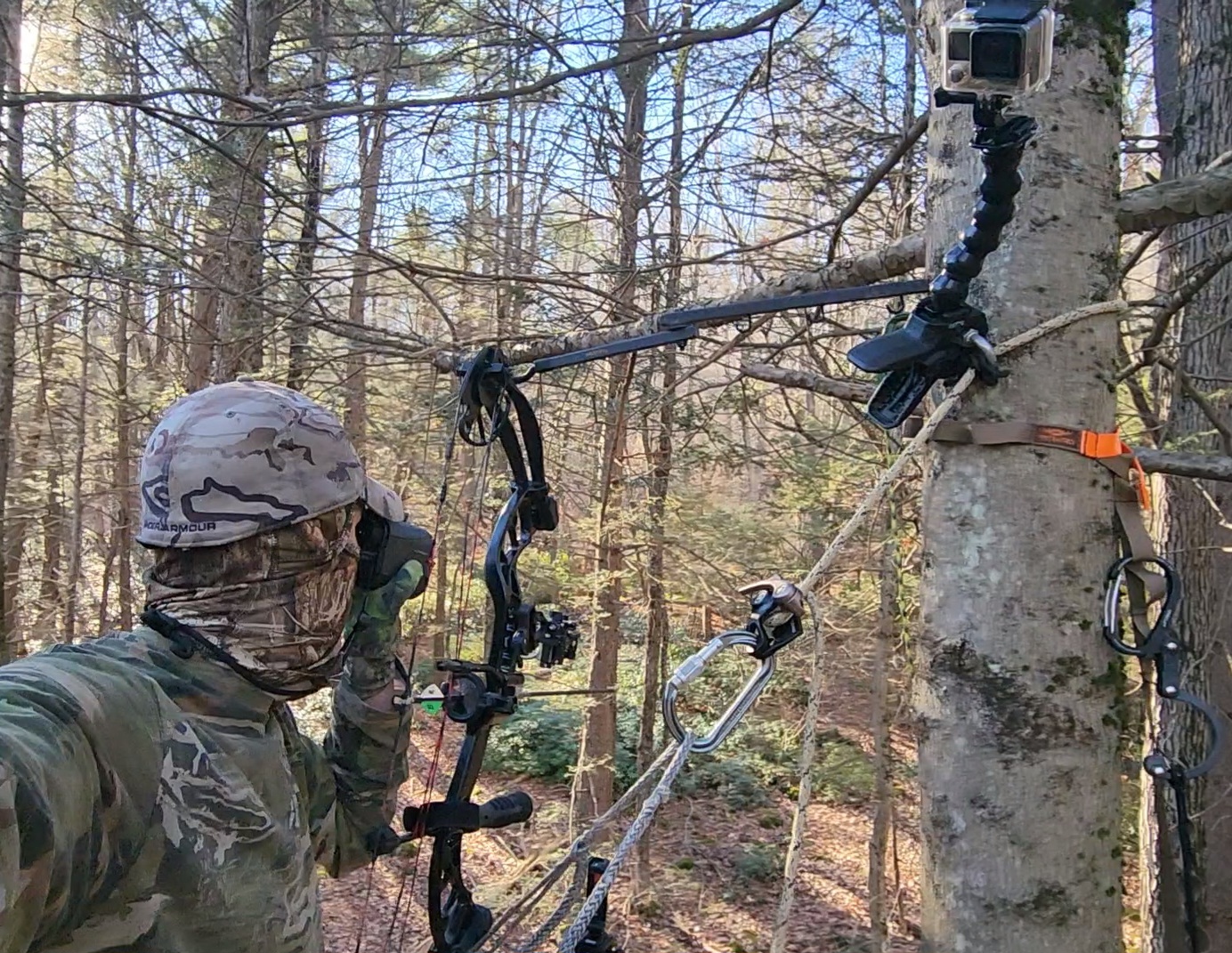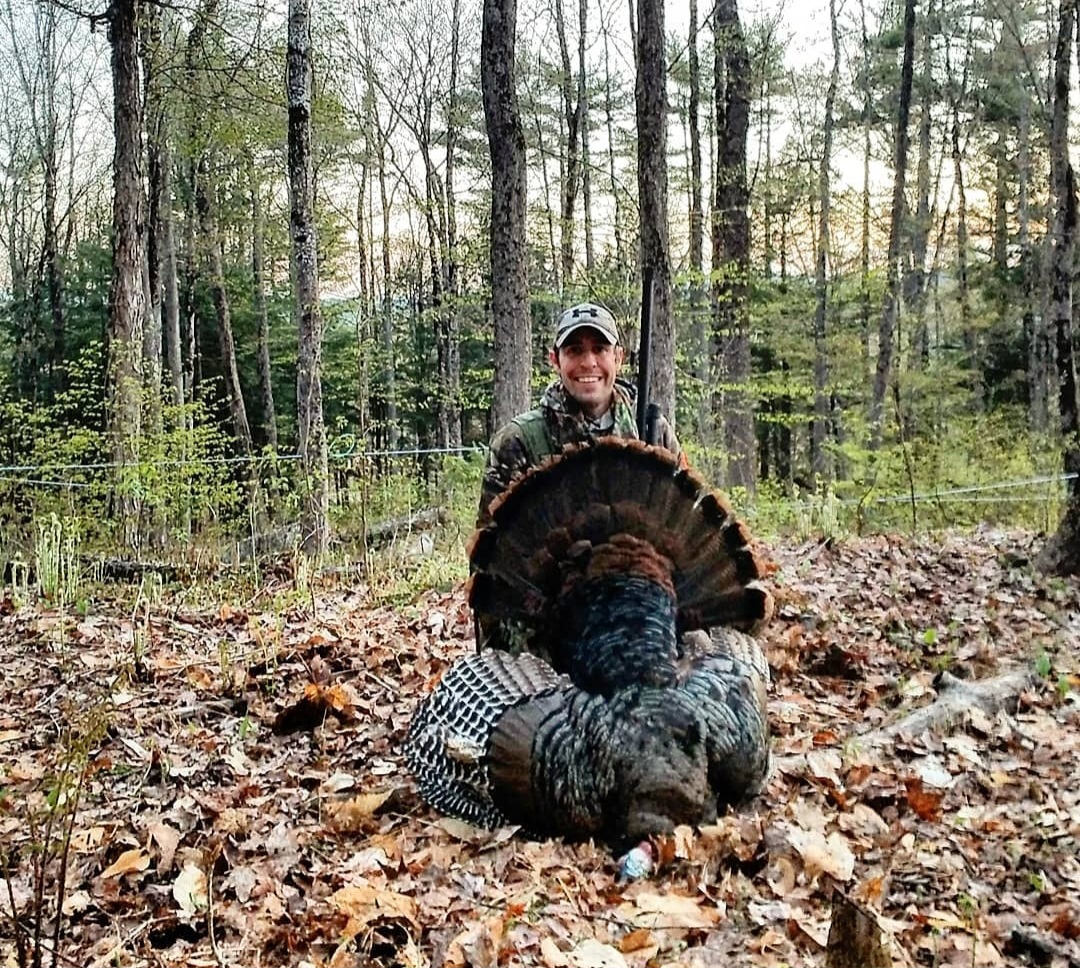
Understanding the Science Behind Mock Scrapes
Mock scrapes, a hunter’s subtle tool to lure mature bucks, work by tapping into the intricate deer communication system. Deer, particularly bucks, use scrapes as a method of communication to assert their presence and dominance, and to signify their readiness for breeding. They form these natural scrapes primarily during the pre-rut phase, when they are marking their territory and inviting does to visit. By understanding and replicating these signals, hunters can attract, influence, and anticipate the movements of mature bucks.
Deer employ a multi-sensory approach in their communication. A scrape typically comprises two main components: a ground disturbance where the deer paw the earth to expose the soil, and an overhanging ‘licking branch’ at about deer’s head height. The ground exposes fresh earth, while the licking branch is usually a twig or branch that deer manipulate with their mouths and rub with their foreheads to deposit scent from glands located there.
The Importance of Scent in Deer Communication
Scent plays an essential role in the deer’s communication system. Deer possess an incredibly acute sense of smell, allowing them to pick up the subtlest of scents. When a buck makes a scrape, he leaves behind a potent combination of smells from urine, gland secretions, and the disrupted earth. These smells can convey an array of information to other deer, such as the buck’s size, health, dominance status, and readiness to breed.
Hunters can exploit this reliance on scent by using vines in their mock scrapes. By using these vines with doe estrous or buck urine, hunters can create a potent array of scents to signal a deer to the scrape.
Visual Cues in Deer Communication
Alongside scent, visual cues also play a significant role in deer communication. When a buck creates a scrape, the disturbed ground and the positioned overhanging branch serve as visible markers to other deer in the area. These visual signs signify a buck’s territory and indicate his regular presence.
In creating mock scrapes, hunters should aim to mimic these visual signals as closely as possible. This includes carefully choosing a location with an overhanging branch and disturbing the ground in a manner similar to that of a natural scrape. This creates a believable visual cue that can attract deer to the location.
In essence, the science behind mock scrapes is deeply rooted in understanding deer behavior and communication. By accurately replicating these natural signals, hunters can create an effective hunting tool that lures in mature bucks, significantly increasing their hunting success.
Step-by-Step Guide to Making a Mock Scrape
The construction of a successful mock scrape requires detailed knowledge of deer habits and behaviors, and a thoughtful execution of the process. It’s not merely about mimicking the physical appearance of a scrape, but about creating an authentic-seeming signal to a deer that another buck is in the vicinity. Here’s how you can create an effective mock scrape:
Here is a quick demonstration from my YouTube channel showing how I make my mock scrapes. After years of using them I find this to be the most successful way in making a mock scrape.
1. Choosing the Right Location
The location of your mock scrape is critical to its success. Deer are creatures of habit, tending to follow established paths between bedding and feeding areas. Mock scrapes should ideally be located along these paths or near a food source, maximizing the chances of a deer discovering it.
Look for signs of deer activity such as tracks, droppings, or existing scrapes. A good mock scrape location should be in an area that is naturally appealing to a deer, with sufficient cover and access to food and water.
However, it’s crucial to maintain a balance. If the mock scrape is placed too close to high-traffic human areas, the deer may get spooked and avoid the area. Seclusion and tranquility are key attributes of an ideal mock scrape location.
2. Proper Timing for Mock Scrapes
Understanding the deer’s behavioral patterns is crucial for timing the creation of your mock scrape. The most effective time is right before the rut, usually in the late summer or early fall. During this period, bucks are marking territories and signaling their readiness to breed, hence they are more likely to engage with a mock scrape.
3. Reducing Human Scent
Deer have an exceptionally acute sense of smell, and any trace of human scent can be a red flag, causing them to steer clear of the area. When creating a mock scrape, it is vital to minimize any human scent transferred to the environment.
Wear gloves to prevent your scent from contaminating the mock scrape. Rubber boots are also recommended as they don’t absorb human scent as readily as other materials. Use a scent eliminator on your boots and tools to mask any human odors. Some hunters even go a step further and use deer scents or cover scents on their clothing to blend into the environment.
4. Using the Right Stimuli in Your Mock Scrape
A natural scrape typically consists of a ground disturbance and an overhanging ‘licking branch’. When creating a mock scrape, it’s essential to mimic these components closely.
Choose a location with an overhanging branch at about deer’s head height, usually 4-5 feet from the ground. This will serve as the ‘licking branch’. Bucks will often rub their antlers and forehead against the branch, depositing scent from their glands. Using your gloves, manually manipulate the branch to mimic this behavior.
For the ground disturbance, use a stick to paw the earth, mimicking the action of a buck. The ground disturbance should be roughly three feet in diameter, exposing fresh soil.
To further attract deer, consider adding scent to your mock scrape. Using a scent dripper filled with doe estrous or buck urine can stimulate the interest of bucks. This scent simulates the presence of a buck or a doe in estrus, and can be a potent attractant.
Remember, the goal is to create an environment that mimics the natural signals a buck would leave. Patience, precision, and attention to detail will serve you well in creating an effective mock scrape.
My Successful Journey with Mock Scrapes: A Testament to Adaptability and Strategy
Over the years, I’ve honed various hunting strategies and techniques, but one method that’s stood out for its effectiveness is the use of mock scrapes. It was several years ago when I first dabbled in this approach, and since then, it has remained an integral part of my deer hunting strategy, yielding great success.
When I first started, I understood the core premise – that mock scrapes tap into the communication system of deer, particularly bucks. By replicating their signaling method, I could subtly guide their movements to advantageous locations. This not only improved my chances of a successful hunt but also offered a fascinating insight into the behavior and habits of the bucks.
Year-Round Mock Scrape Management
Unlike some hunters who only utilize this strategy during the hunting season, I run my mock scrapes throughout the year. This year-round engagement has several benefits. Firstly, it maintains a consistent communication channel with the deer, mimicking their natural behavior. Deer interact with scrapes year-round, albeit more intensely during the rut, so my mock scrapes serve as a familiar and continuous signpost in their environment.
Running the mock scrapes all year also allows me to constantly gather information about deer movement and behavior in different seasons. This long-term monitoring provides invaluable insights that shape my hunting strategies. By using trail cameras alongside the mock scrapes, I can monitor which deer frequent the scrapes, their times of activity, and how they react to different stimuli.
Constantly Adapting Hunting Strategy
This year-round engagement with mock scrapes has demanded a fluid hunting strategy. I’ve learned that the approach is not a ‘set it and forget it’ tactic. It requires constant monitoring, adjusting, and refining to match the changing habits and behaviors of the deer.
One critical lesson has been the importance of location. Over time, I have had to adjust the positioning of my mock scrapes, often based on changes in deer movement patterns, food source locations, and general environmental changes. The aim is always to place the scrapes in areas that not only see regular deer traffic but also offer a strategic advantage for hunting.
I have also learned the value of subtlety. Early on, I found that any strong evidence of human intervention could be a deterrent to the deer. Over time, I refined my techniques to minimize human scent and any signs of disturbance. This meant using scent-free boots, gloves, and tools when creating and maintaining the scrapes. I also began using scent eliminators and deer attractants more strategically to further disguise any human presence and lure in the deer.
Final Thoughts
In conclusion, creating the perfect mock scrape is a blend of art and science that, when done right, can significantly elevate your hunting success. It requires careful planning, constant adjustment, and a keen understanding of the deer’s behavior. But, with patience and dedication, mastering the art of mock scrapes can provide a fascinating insight into the world of deer and offer a strategic advantage in your hunting pursuits. So, keep honing your craft, keep learning, and most importantly, keep enjoying the thrill of the hunt.
Frequently Asked Questions about Mock Scrapes
What is a mock scrape?
A mock scrape is a tool that hunters use to imitate the natural scraping behavior of bucks. It is designed to simulate deer communication, influencing their movement and attracting them to a specific location.
How does a mock scrape work?
Mock scrapes work by mimicking deer communication cues. Bucks use scrapes to announce their presence and status to other deer. By creating a mock scrape that closely resembles a real one, hunters can attract bucks to the location and potentially manipulate their movements.
When is the best time to make a mock scrape?
The best time to create a mock scrape is right before the deer rutting period, usually in the fall. This is when bucks are the most active and likely to encounter your mock scrape.
How can I reduce my scent when making a mock scrape?
Wear gloves and use scent eliminators on your boots and tools when creating the scrape. This helps to reduce human scent that could deter deer from approaching the mock scrape.
What should I use in my mock scrape to attract deer?
Use an overhanging branch, or a ‘licking branch’, at deer’s head height. Consider using a scent dripper filled with doe estrous or buck urine to make the scrape more attractive to the deer.
Can mock scrapes be used throughout the year?
While the most common time to use mock scrapes is right before the rut, maintaining and adjusting them throughout the year can provide continuous insights into deer behavior and movements.
How can I make my mock scrape more successful?
To increase the effectiveness of your mock scrape, ensure it is placed in an area frequently used by deer, use the right stimuli, time its creation appropriately, and minimize your scent.
How has the use of mock scrapes evolved over time?
Over the years, the use of mock scrapes has evolved from a simple hunting tactic to a sophisticated strategy based on an in-depth understanding of deer behavior and communication. This shift has transformed the way hunters approach the deer environment, enabling more successful hunting experiences.


















